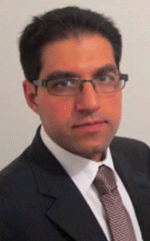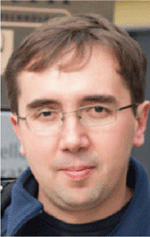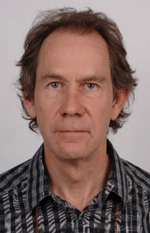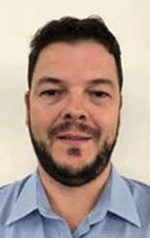Technical de-risking of a demonstration CCUS project for final investment decision in Australia
Mohammad Bagheri A E , Roman Pevzner A B , Charles Jenkins A C , Matthias Raab A , Paul Barraclough A , Max Watson A and Tess Dance A DA CO2CRC Limited, 11–15 Argyle Place South, Carlton, Vic. 3053, Australia.
B WA School of Mines: Minerals, Energy and Chemical Engineering, Curtin University WA, Australia.
C CSIRO Black Mountain, Clunies Ross St, Canberra, ACT 2601, Australia.
D CSIRO, 26 Dick Perry Avenue, Kensington, WA 6155, Australia.
E Corresponding author. Email: mohammad.bagheri@co2crc.com.au
The APPEA Journal 60(1) 282-295 https://doi.org/10.1071/AJ19139
Submitted: 6 January 2020 Accepted: 6 March 2020 Published: 15 May 2020
Abstract
CO2CRC is developing subsurface monitoring technologies which can significantly reduce the cost and environmental footprint compared to traditional 4D surface seismic. These can be applicable to both hydrocarbon production and CO2 injection projects. These methodologies involve continuous seismic monitoring using well-based distributed acoustic sensors and pressure tomography. CO2CRC’s Otway Stage 3 Project is aiming to validate these techniques while injecting 15 000 t of CO2 into the Paaratte Formation in the Otway basin and monitoring the plume using an array of six wells. The main technical risks for subsurface monitoring are migration of the plume outside of the survey area and lack of communication between the wells. Moreover, given some amount of CO2 is already in the injection formation (from CO2CRC Otway Stage 2C Project), it is required to understand the chance of the new plume merging with the existing plume and the possible timeframe. This paper summarises the workflow followed to de-risk the project and optimise the injection and monitoring wells location to reduce the abovementioned risk factors. As a result of the de-risking process, by changing different parameters and mitigating some of the risks, we gained a high degree of confidence that the CO2 plume will stay within the survey area and that the chance of pressure communication between the wells was increased. A thorough sensitivity analysis was also performed to understand the influence of each parameter on the plume speed. This process provided a higher confidence to decision makers to make a final AU$45 million investment decision.
Keywords: CCUS, CO2 monitoring, communication between the wells, plume migration, risk.

Mohammad Bagheri joined CO2CRC in late 2017 and is currently working as a Subsurface Manager. He is a Reservoir Engineer with 17 years of international oil and gas experience covering reservoir simulation, CO2 EOR and CCUS projects, reserve assessment, analytical reservoir engineering, well performance and nodal analysis, field development planning, well-test analysis and design, core and fluid analysis, production engineering and field operations in Australia, Europe and the Middle East. In his current role, Mohammad is managing the subsurface activities across the organisation with a multi-disciplinary team including geophysicists, geologists and reservoir engineers. Mohammad holds a PhD in Petroleum Engineering from Sharif University of Technology. He started his career with NIOC in 2003 as a field engineer and subsequently worked for Statoil, Schlumberger, British Gas and Santos as both production and reservoir engineer in different time periods between 2005 and 2017. Mohammad is recognised as a Chartered Professional Engineer with Engineers Australia. He is a member of the Board of Professional Engineers of Queensland and certified by SPE as a Petroleum Professional. Mohammad has been appointed as the Program Chair for the Victorian and Tasmanian chapter of the Society of Petroleum Engineers since 2018. |

Dr Roman Pevzner has a PhD in Geophysics (2004) from Lomonosov Moscow State University (Russia). He was heading software development department in DECO Geophysical (Moscow, Russia) service company in 2002–2008. At the same time he was involved in research and teaching at Geological Faculty of LMSU, Seismometry and Geo-acoustics Department. Dr Pevzner was appointed as A/Professor in Discipline of Exploration Geophysics at Curtin University (Perth, Australia) in 2008, progressing to Professor in 2018. His main areas of interest are signal processing, borehole seismic methods and time-lapse seismic surveys and he has coauthored 3 book chapters, 55 journal papers and more than 150 refereed conference publications. |

Charles Jenkins is an Applied Physicist with a PhD from the University of Cambridge and now works with CSIRO Australia with CO2CRC. He has previously worked in a variety of instrument design roles, including seven years with Schlumberger. Since 2008 he has been involved in the design and operation of the Otway Project, where his principal responsibilities have been in managing the M&V programme, with associated experience in project design, risk assessment, regulatory compliance and public relations. The Otway Project Stage 1 stored 65 000 t of CO2 and the lessons learned from this project were summarised in a major paper published in 2012 in the Proceedings of the National Academy of Sciences of the USA. Charles is the Science Lead for the successor AU$45 million Stage 3 project which began drilling operations in July. Charles is a Fellow of the UK Institute of Physics and an Associate Editor of the International Journal of Greenhouse Gas Control. |

Dr Matthias Raab is an experienced manager with international credentials in successful, high profile and complex projects in industry and academia. He has 23 years of experience in commercial and R&D environments with major sector clients. At CO2CRC Ltd, Dr Raab manages large project portfolios with teams of up to 70 people and annual budgets of up to AU$20 million. As Chief Operations Officer, Dr Raab has strategic and operational responsibility for CO2CRC’s research facilities, research programs and the delivery of major research and infrastructure projects. Dr Raab manages a group of Senior Program, Project and Operations Managers and provides leadership to CO2CRC’s strategic planning and implements new strategic initiatives. Dr Raab’s overall portfolio includes the AU$45 million research program in Carbon Capture and Geological Carbon Storage, the CO2CRC Otway Field Facility, the Stage 3 Expansion of the Otway Project and the AU$51.6 million infrastructure grant awarded to CO2CRC under the Education Investment Fund. In previous roles Dr Raab managed Australia’s largest 2D marine seismic survey in Bass Strait, led the Victorian carbon capture and storage (CCS) initiative exploring for industrial scale CO2 storage in the Gippsland Basin and was a Project Manager building and documenting the border between the Kingdom of Saudi Arabia and the Republic of Yemen |

Paul Barraclough is an Oil and Gas Professional who commenced a career as a Chemical Engineer working with BHP Engineering in the Western Australian Pilbara region and subsequently moved into the oil and gas service industry to embark on an international career spanning the next 17 years. Opportunities with the industry’s largest oil and gas service company, working within the Testing Services Reservoir Characterisation Group, spanned more than a dozen countries and several highly technical field and office-based roles with a continuing focus on reservoir measurements and characterisation as well as supporting roles with personnel and HSE. In managerial roles both internationally and domestically (within Australia), multiple high profile offshore and land-based projects for the segment were managed through to successful delivery – including most recently, operations in the North-West Shelf of WA, Barrow Island, PNG and eastern Australia. Paul’s current role with CO2CRC Ltd, focuses on project management for the field deployment and testing of innovative CCS technologies and solutions for industry, starting in 2018. Field execution for this project – named CO2CRC’s Stage 3 Project – commenced in earnest in 2019 with the drilling and completion of four new in-field wells to facilitate the testing of efficient and economic subsurface monitoring solutions for the CCS industry. The project will continue through to an operational phase in 2020/21 to be managed through to conclusion in 2022. |

Dr Max Watson has ~20 years’ experience in CCS, working in academic, industry and R&D management sectors, gaining insights from a variety of countries and business types. He graduated from the University of Adelaide with a PhD in Petroleum Geoscience and has worked in various Post-Doctoral to Senior Research positions at the University of Adelaide, examining geochemical and risk management processes for CO2 storage. Max previously worked with BP Alternative Energy (2008–2012), supporting BP as it developed international commercial scale CCS projects through the development of risk based project management processes, applying these to the In Salah Gas Project JV and other emerging CCS projects. He joined CO2CRC in 2012 as Project Development Manager and has progressed through various roles including Storage Program Manager in 2015, and Business Strategy Manager in 2018. He’s currently accountable for planning, executing and implementing strategy across CO2CRC, with a particular focus towards applied storage technology demonstration. Max’s work enables CO2CRC to translate innovative, user driven technologies from bench to field scale. In addition, Max leads the implementation of the Otway International Test Centre, and associated GFV field based projects. He is also Australia's delegate for the Carbon Sequestration Leadership Forum, a Ministerial-level international climate change initiative. |

Dr Tess Dance has worked for more than 15 years in the field of CCS, characterising sites for the geological storage of CO2, first with Geoscience Australia’s Petroleum and Marine division in Canberra, then with the Cooperative Centre for Greenhouse Gas Technologies (CO2CRC) and now with the CSIRO in Perth. Her expertise is in sedimentology and sequence stratigraphy and translating that to 3D geological modelling for CO2 uncertainty risking and injection simulation. She is the geologist for the CO2CRC Otway Project, where she is researching the geological characteristics that influence residual trapping and dissolution storage mechanisms in a saline aquifer and providing critical geological support for the Stage 3 operations. |
References
Bagheri, M., Ryan, S., Byers, D., and Raab, M. (2020). Reducing cost of CCUS associated with natural gas production by improving monitoring technologies. The APPEA Journal 60, 1–9.| Reducing cost of CCUS associated with natural gas production by improving monitoring technologies.Crossref | GoogleScholarGoogle Scholar |
Correa, J., Egorov, A., Tertyshnikov, K., Bona, A., Pevzner, R., Dean, T., Freifeld, B., and Marshall, S. (2017). Analysis of signal to noise and directivity characteristics of DAS VSP at near and far offsets-a CO2CRC Otway project data example. The Leading Edge 36, 994a1–994a7.
| Analysis of signal to noise and directivity characteristics of DAS VSP at near and far offsets-a CO2CRC Otway project data example.Crossref | GoogleScholarGoogle Scholar |
Dance, T. (2018). Characterisation of the Late Cretaceous Paaratte Formation, a heterogeneous saline aquifer, for an Australian CO2 storage project. Journal of Petroleum Geology. , .
Egorov, A., Pevzner, R., Bóna, A., Glubokovskikh, S., Puzyrev, V., Tertyshnikov, K., and Gurevich, B. (2017). Time-lapse full waveform inversion of vertical seismic profile data; workflow and application to the CO2CRC Otway project. Geophysical Research Letters 44, 7211–7218.
| Time-lapse full waveform inversion of vertical seismic profile data; workflow and application to the CO2CRC Otway project.Crossref | GoogleScholarGoogle Scholar |
Ennis-King, J., Gunning, J. and Jenkins, C. (2018). Refinement and testing of inversion algorithms for pressure tomography. s.l.: CO2CRC.
Gunning, J., Ennis-King, J., LaForce, T., Jenkins, C., and Paterson, L. (2020). Bayesian well-test 2D tomography inversion for CO2 plume detection. International Journal of Greenhouse Gas Control 94, 102804.
| Bayesian well-test 2D tomography inversion for CO2 plume detection.Crossref | GoogleScholarGoogle Scholar |
Jenkins, C., Bagheri, M., Barraclough, P., Dance, T., Ennis-King, J., Freifeld, B., Glubokovskikh, S., Gunning, J., LaForce, T., Marshall, S., Paraschivoiu, E., Paterson, L., Pevzner, R., Tenthorey, E., and Watson, M. (2018). Fit for purpose monitoring - a progress report on the CO2CRC Otway Stage 3 pr3 Project. In ‘14th International Conference on Greenhouse Gas Control Technologies, GHGT-14, 21–25 October 2018, Melbourne, Australia.’ Available at https://ssrn.com/abstract=3366163 [verified 5 March 2020].
Paraschivoiu, E., Dance, T., and Globokovskikh, S. (2018). Otway stage 3 define: static modelling and uncertainty. s.l.: CO2CRC.
Paul, P. K., Zoback, M., and Hennings, P. (2011). A method to implement permeability anisotropy associated with fault damage zones in reservoir simulation. SPE Reservoir Evaluation & Engineering 14, 138–152.
| A method to implement permeability anisotropy associated with fault damage zones in reservoir simulation.Crossref | GoogleScholarGoogle Scholar |
Pevzner, R., Glubokovskikh, S, Gurevich, B, Tertyshnikov, K, Urosevic, M, Bona, A, Egorov, A, Pirogova, A, Yavuz, S and Correa, J. (2017). Seismic monitoring program for CO2CRC Otway project Stage 3: Final report on the Evaluate Phase. CO2CRC Ltd, Melbourne, Australia, CO2CRC Publication Number RPT17-5753.
Pevzner, R., Correa, J, Popik,S, Glubokovskikh, S, Tertyshnikov, K, Yavuz, S and Gurevich, B. (2018). Seismic monitoring program for CO2CRC Otway project Stage 3: Define Phase. CO2CRC Ltd, Melbourne, Australia, CO2CRC Publication Number RPT18-5893.
Saeedi, A., and Bagheri, M. (2018). CRC-3 special core analysis (SCAL) results. Melbourne: CO2CRC.
Watson, M., Pevzner, R., Dance, T., Gurevich, B., Ennis-King, J., Glubokovskikh, S., Urosevic, M., and Tertyshnikov, K. La Force, T., Tenthorey, E., Bagheri, M., Paterson, L., Cinar, Y., Freifield, B., Singh, R., and Raab, M. (2018). The Otway Stage 2c Project – end to end CO2 storage in a saline formation, comprising characterisation, injection and monitoring. In ‘14th Greenhouse Gas Control Technologies Conference Melbourne 21–26 October 2018 (GHGT-14)’. Available at SSRN: https://ssrn.com/abstract=3365633 [verified 10 March 2020].


